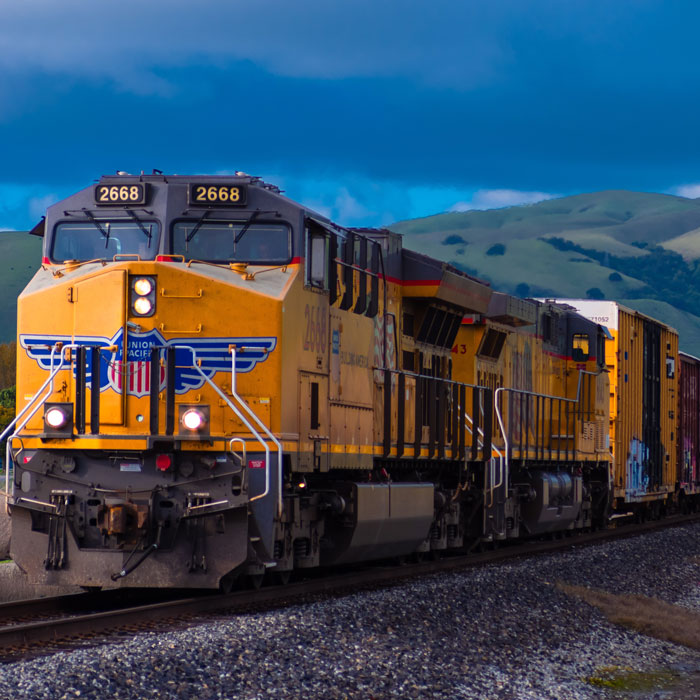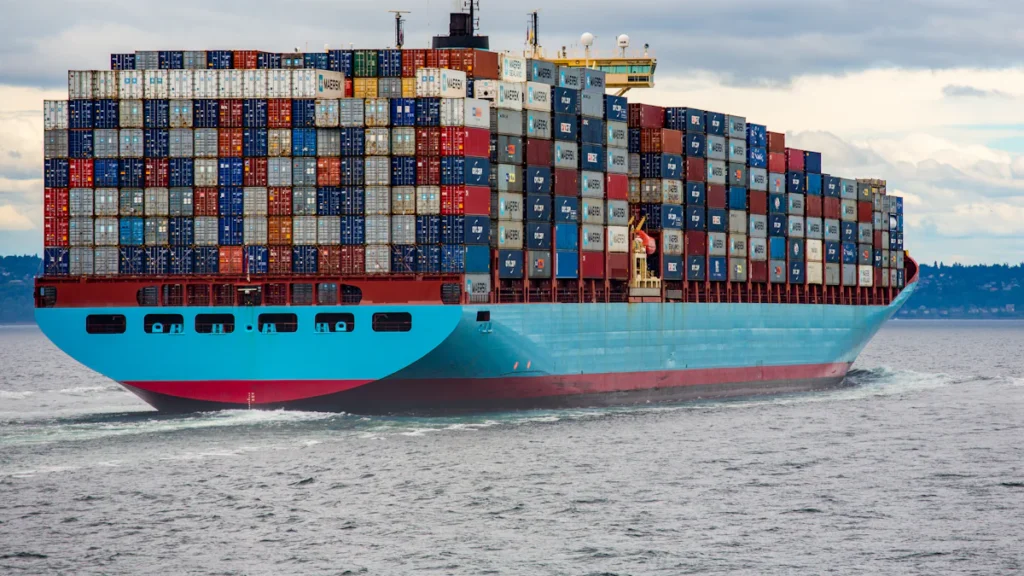- By Della tj
- November 18, 2025
- Rail Freight, Shipping
Moving goods through professional rail freight from Shenzhen to Spain has become a preferred solution for businesses seeking faster schedules than sea freight and more economical rates than air freight. Many importers face challenges such as fluctuating freight costs, unclear transit times, and complex EU customs, yet this guide explains everything needed to ship confidently and efficiently.
What Makes Rail Freight from Shenzhen to Spain an Effective Choice?
Rail freight offers a strategic middle ground between sea and air transportation. Additionally, it delivers faster transit times than sea routes while maintaining significantly lower costs than air freight. Furthermore, railway corridors connecting China and Europe provide dependable schedules and allow businesses to plan supply chain operations with greater consistency.
Another advantage is the reduced carbon footprint, which supports environmentally conscious importers seeking greener logistics solutions. Consequently, rail becomes ideal for electronics, textiles, machinery, automotive components, and general commercial goods that require stable delivery but not air-urgent transit.
How Long Does Rail Freight from Shenzhen to Spain Typically Take?
Rail transit from Shenzhen to Spain generally ranges from 18 to 24 days, depending on the route, consolidation schedule, customs checks, and final delivery location. Moreover, peak seasons, weather conditions, and European terminal congestion may slightly affect timelines.
To help shippers compare modes, the table below summarizes typical transit durations:
| Mode of Transport | Average Transit Time | Suitable Cargo Types |
|---|---|---|
| Rail Freight | 18–24 days | General cargo, electronics, machinery |
| Sea Freight | 30–40 days | Bulk shipments, large volumes |
| Air Freight | 3–7 days | High-value or urgent goods |
These ranges allow businesses to structure their delivery timelines precisely and avoid supply chain disruptions.
What Are the Main Rail Freight Costs from Shenzhen to Spain?
Rail freight pricing depends on shipment size, cargo type, container selection, and seasonal demand. Accordingly, rail freight often provides better value than air freight while offering superior speed compared to sea freight.
A general cost comparison is included below:
| Shipping Method | Cost Level | Key Advantages |
|---|---|---|
| Rail Freight | Medium | Faster than sea, cheaper than air |
| Sea Freight | Lowest | Most economical for large volumes |
| Air Freight | Highest | Fastest option for urgent cargo |
Beyond base freight charges, importers should also account for customs fees, terminal handling, documentation charges, and door-to-door delivery fees if required.
Which Documents Are Required for Rail Freight to Spain?
Smooth customs clearance relies on complete and accurate documentation. Therefore, businesses should prepare the following:
| Document Type | Purpose |
|---|---|
| Commercial Invoice | Declares transaction details |
| Packing List | Describes cargo weight and packaging |
| Bill of Lading / Rail Waybill | Serves as transport contract |
| HS Code Declaration | Identifies product category |
| Certificate of Origin | Needed for customs duty assessment |
| Import Licenses (if applicable) | Required for restricted items |
These documents ensure compliance with EU regulations and prevent clearance delays during the arrival process.
What Real Case Studies Demonstrate Rail Freight Performance?
Case A — Electronics Shipment (Shenzhen → Madrid)
Cargo: 8 CBM consumer electronics
Mode: Rail freight consolidated
Cost: USD 1,150
Transit Time: 20 days
Result: Stable schedule and 30% savings versus air freight
Case B — Machinery Parts (Shenzhen → Barcelona)
Cargo: 1 × 20′ container
Mode: Full container rail transport
Cost: USD 3,750
Transit Time: 22 days
Result: Predictable transit enabled factory production planning
These examples highlight how rail creates reliable outcomes for different business needs.
How Does Rail Freight Compare with Sea and Air Transport?
Multiple considerations influence the choice of transport mode. The table below provides a clear comparison:
| Factor | Rail Freight | Sea Freight | Air Freight |
|---|---|---|---|
| Speed | Medium-fast | Slow | Fastest |
| Cost | Medium | Lowest | Highest |
| Environmental Impact | Low | Low-medium | High |
| Cargo Flexibility | High | Very high | Limited |
| Best Use | Balanced shipments | Large volumes | Urgent cargo |
This comparison shows why rail freight appeals to companies needing faster cargo movement without committing to high air freight expenses.
Need a reliable logistics partner? Share your shipment details and we’ll provide a tailored quotation quickly and accurately.
What Types of Cargo Are Best Suited for Rail Transport?
Rail freight supports a broad range of commercial shipments. For example, electronics, LED lighting, machinery parts, automotive components, textiles, household goods, and packaged consumer products all travel well by rail. Additionally, its stable environment reduces handling risk, making it suitable for fragile but non-perishable items.
Although rail cannot transport extremely hazardous or oversized goods easily, most general commercial products fall well within its capability. As a result, many Spanish importers rely on rail services for routine replenishment and seasonal restocking.
How Can Businesses Optimize Rail Freight Shipments to Spain?
Several strategies help importers reduce costs and improve transit performance. First, accurate cargo dimensions ensure proper container allocation and prevent unnecessary surcharges. Second, consolidating LCL shipments during the same week often reduces per-CBM pricing. Third, preparing documents early avoids customs delays at both departure and arrival terminals.
Finally, coordinating multimodal delivery—rail to hub, trucking to warehouse—provides seamless movement and maintains shipment visibility throughout the journey.
Conclusion
Professional rail freight from Shenzhen to Spain offers predictable transit times, balanced costs, and strong supply chain reliability. Choosing rail enables importers to maintain fast replenishment cycles without overspending on air freight or risking long sea transit delays. Businesses that adopt structured planning, complete documentation, and accurate cargo forecasting achieve smoother logistics and greater operational stability.
Request a Quote
Need a tailored solution for your shipping from China?Let TJ China Freight Forwarder assist you with reliable, cost-effective service.
FAQ:
Q1.How can small importers benefit from rail freight from Shenzhen to Spain?
Small importers gain predictable transit times and cost-effective logistics by using professional rail freight from Shenzhen to Spain with consolidated cargo services and flexible weekly departures.
Q2.What cargo sizes work best for rail freight when shipping to Spain?
Cargo between 3 and 15 CBM is ideal for cost-efficient rail freight from Shenzhen to Spain, especially when businesses need balanced transit schedules and stable delivery performance.
Q3.Do rail shipments require complex customs procedures for Spain imports?
Rail freight from Shenzhen to Spain requires standard EU customs clearance steps, and complete documents ensure smooth transit, reduced delays, and reliable multimodal logistics coordination.
Q4.Is rail freight suitable for growing eCommerce businesses shipping to Spain?
eCommerce sellers gain affordable transit options and predictable schedules by choosing rail freight from Shenzhen to Spain, especially for electronics, accessories, and packaged consumer products.
Q5.Can rail freight reduce logistics risks for Spanish distributors?
Spanish distributors benefit from consistent delivery cycles and minimized delays by using professional rail freight from Shenzhen to Spain with structured documentation and reliable freight planning.




